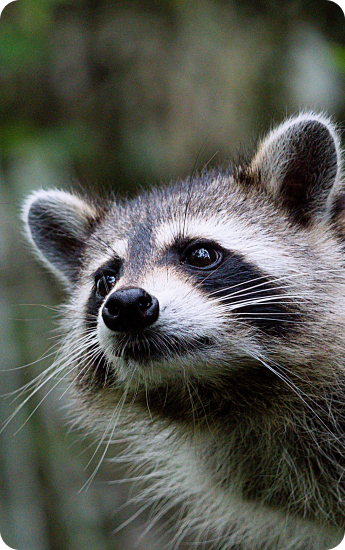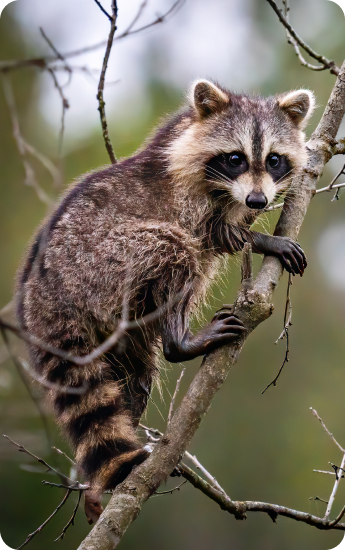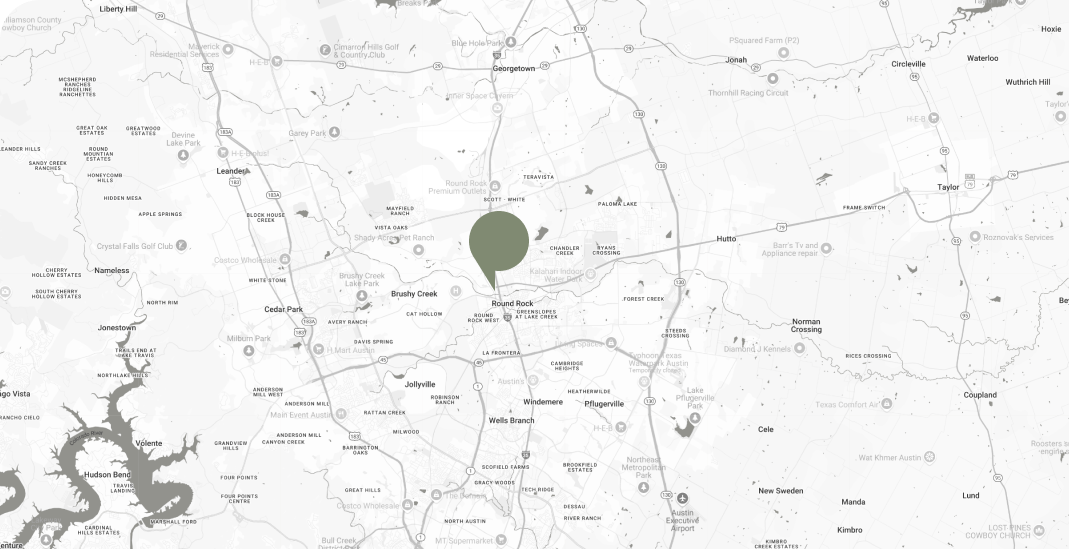Raccoons
Biology & Habits
Raccoons are both opportunist and omnivorous. They will eat plants, including all types of fruits, berries, nuts acorns, corn, and another types of grains. The raccoon’s diet can also include crayfish, clams, fish, frogs, snails, insects, turtles and their eggs, mice rabbits, chickens, and eggs of young birds and waterfowl.
Raccoons, like most people, find that making a living in an urban setting is much easier than survival in a rural area; for example the availability of dog and cat food left out. Other sources of food include bird feeders, compost piles trash cans and dumpsters, etc. The raccoon is consistently exploring and a curious animal of the bear family. Although raccoons are nocturnal, they can become ‘urbanized’ losing their fear of humans and human activity resulting in being seen during daylight hours. This presents a potentially dangerous situation, particularly for children and pets, when the determined raccoon does not avoid humans. Raccoons typically breed in February or March. Their gestation period is about 63 days, with most litters born in April or May. However some late-breeding females may not give birth until June, July or August. Only 1 litter is raised per year, with the average litter size of 3 to 5 babies. The young will open their eyes at about 3 weeks of age and are weaned sometime between 2 and 4 months of age. Family groups (female an offspring) gradually separate soon after.
Raccoons
Physical Abilities
The ability of raccoons is generally under estimated. Raccoons can climb any surface with the exception of glass and un-weathered sheet metal; climbing vertical walls such as wood, stone, brick, masonite siding and the downspouts of gutters is no challenge. Raccoons often gain access in attics thru roof, gable and soffit vents and roof intersections; ripping access holes thru composition roofs and mortar chimney caps in disrepair is common. If a raccoon is determined to gain access, there’s no stopping them. See the raccoon photo gallery section for examples.



